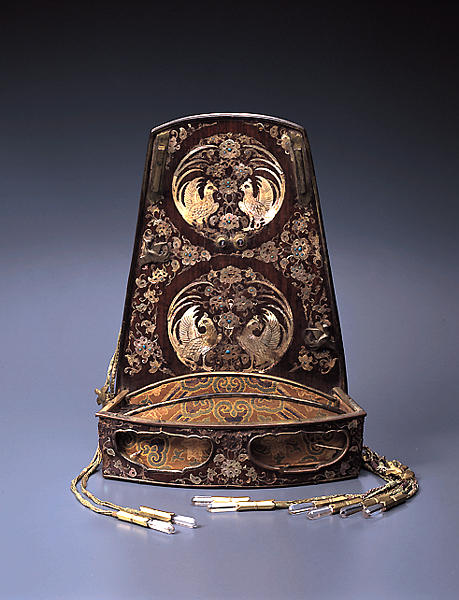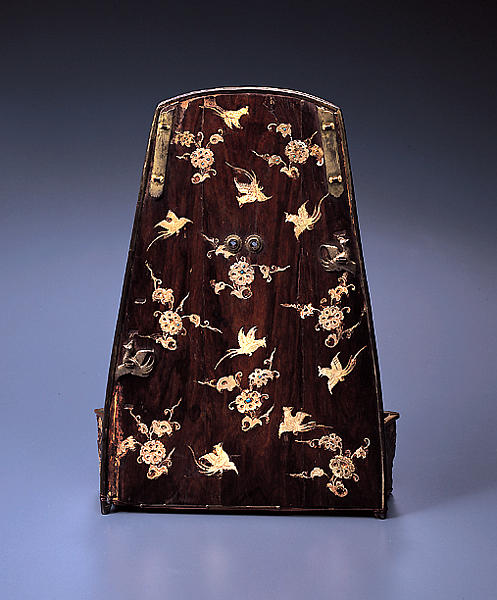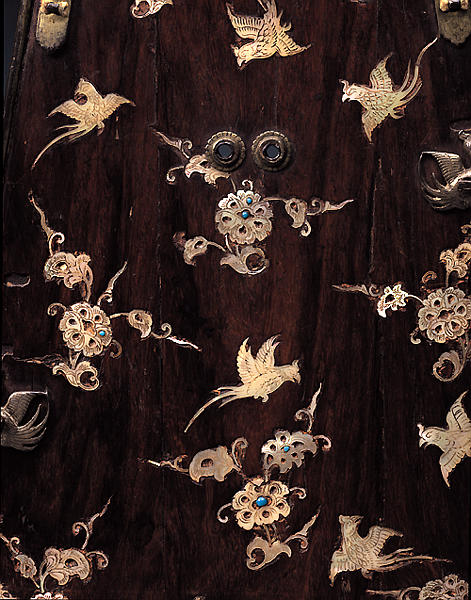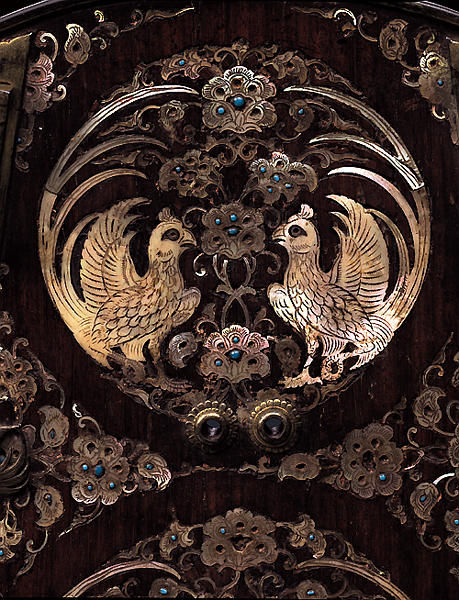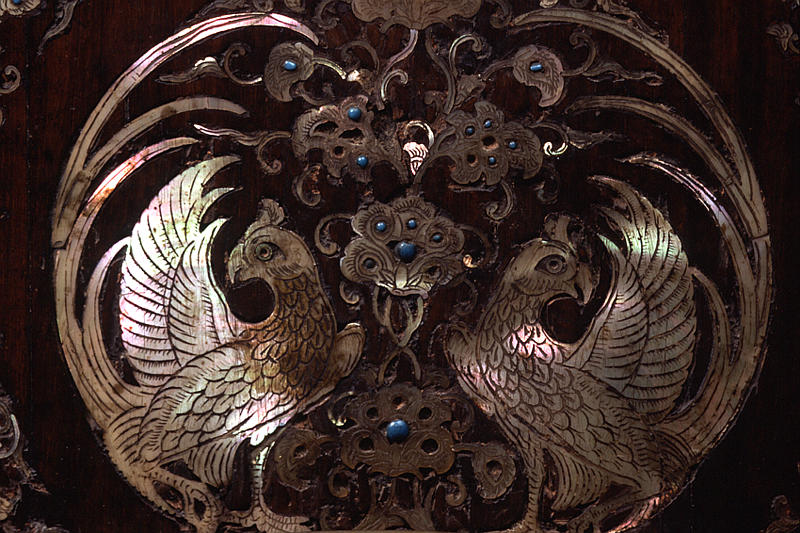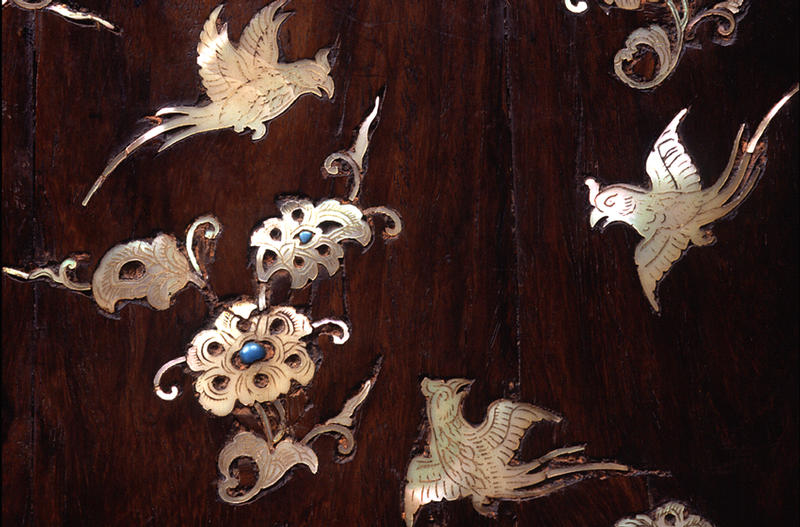Flat Quiver with Phoenix and Hōsōge Floral Motifs
- Late Heian period
- 12c
- Lacquered wood with mother-of-pearl inlay
- H-31.9 D-8 W-23.6
- Important Cultural Property
Catalogue Entry
Late Heian period, 12th century
Height, 32.0cm; width, 20.0cm; front board height,
4.5cm; depth, 21.0cm
The koroku (or yanagui) quiver form is a piece of military equipment used to hold and arrange arrows. The shape of the container for the arrows on these quivers determines the names of their different styles, with quivers with cylindrical containers known as tsubo koroku, or jar quivers, and those with a rectangular box form fitted with an inner comb-shaped board to hold the arrows and a fan-shaped backboard (like the one here) are known as hira koroku, or flat quivers.
A flat quiver made of tsuzura (arrowroot) wood and coated with red lacquer from the Nara period is preserved in the central storehouse of the Shosoin Repository. Such quivers for actual battle duty were light in weight and thus suitable for active use. This gorgeously decorated flat quiver with its detailed adornment, on the other hand, was for ceremonial use by noblemen or dignitaries when in attendance to the emperor, or during special rites.
The foliate panels that adorn the rectangular box form and its front surface and the side boards are each decorated with ornamental borders in silver gilding, and the metal fittings for the various straps, cord ends, and other necessary attachments are all made of silver gilding. The ground boards are all red sandalwood and have been inlaid with patterns created out of mother-of-pearl. The mother-of-pearl patterns on the front of the backboard include roundel motifs of paired phoenixes centered on hosoge patterns placed one above and one below and a surrounding background pattern of hosoge karakusa vining motifs. The arrow box continues the hosoge pattern from the front surface of the back board, while the side panels of this box are only decorated with half-circular segments of the phoenix roundels. The back surface of the backboard is decorated with scattered hosoge flower petals and scattered phoenix motifs. The mother-of-pearl motifs are incised with extremely finely detailed lines and are further fitted with jasper inlaid in the flower centers and flower petals, all contributing to a particularly gorgeous image.
The techniques of wood-based mother-of-pearl work which center largely on mother-of-pearl inlaid on red sandalwood can be seen scattered through the Shosoin treasures and were one of the adornment methods popular in Tang dynasty China. The present quiver followed the trend for this decorative method which had been used in Japan since the Nara period, and the use of costly foreign materials from Southeast Asia suggests the strong preference for foreign aesthetics in the aristocratic society of the day.
Another example of a red sandalwood flat quiver with mother-of-pearl inlay is among the ancient shrine treasures of Kasuga Taisha, and the back of the comb-shaped arrow holder in its rectangular box is inscribed with a dedication date of 1131 (Daiji 6). Given the similarities of decorative methods used on the present quiver and the Kasuga quiver, the present flat quiver can also be suggested to have been produced in approximately this same period. SK
